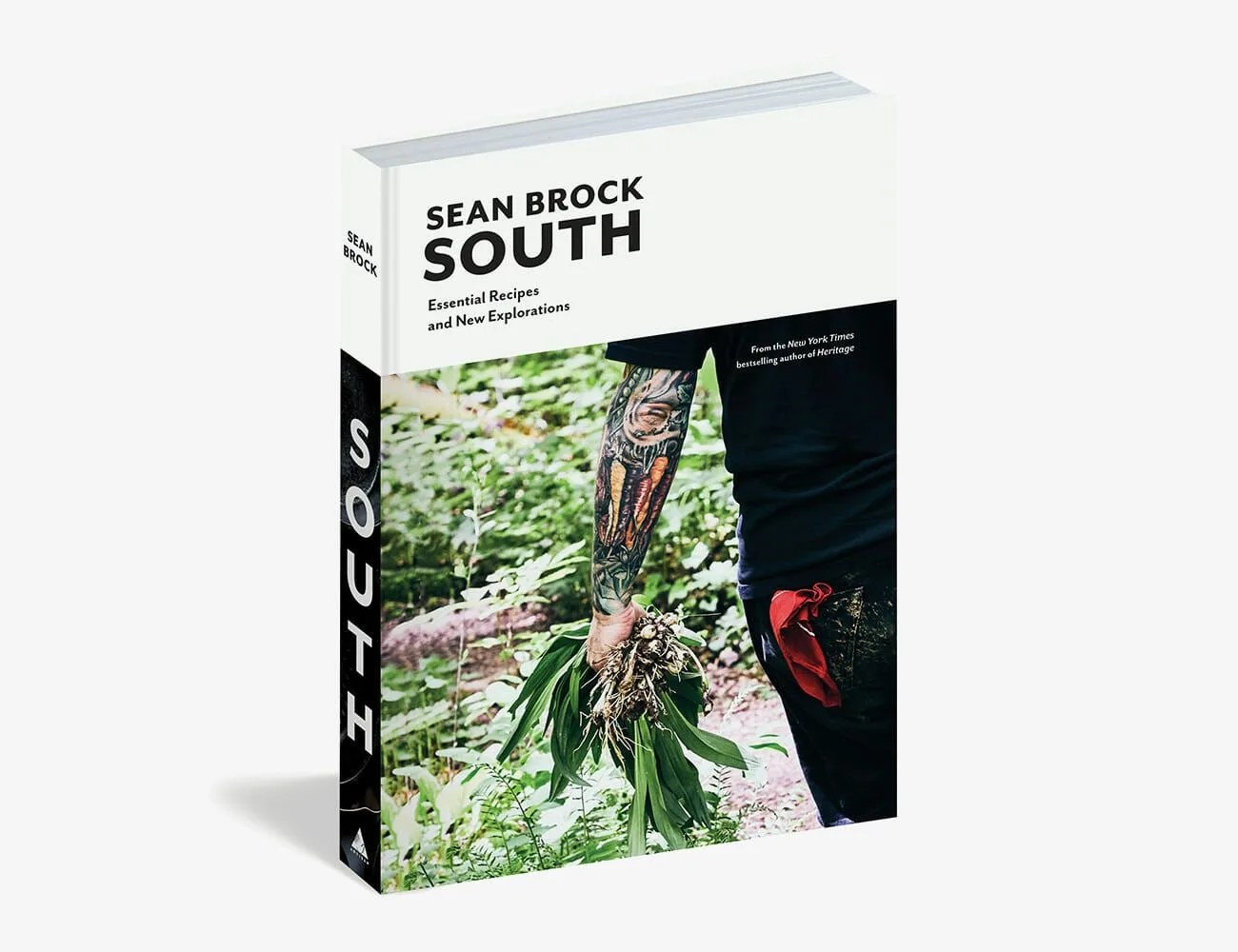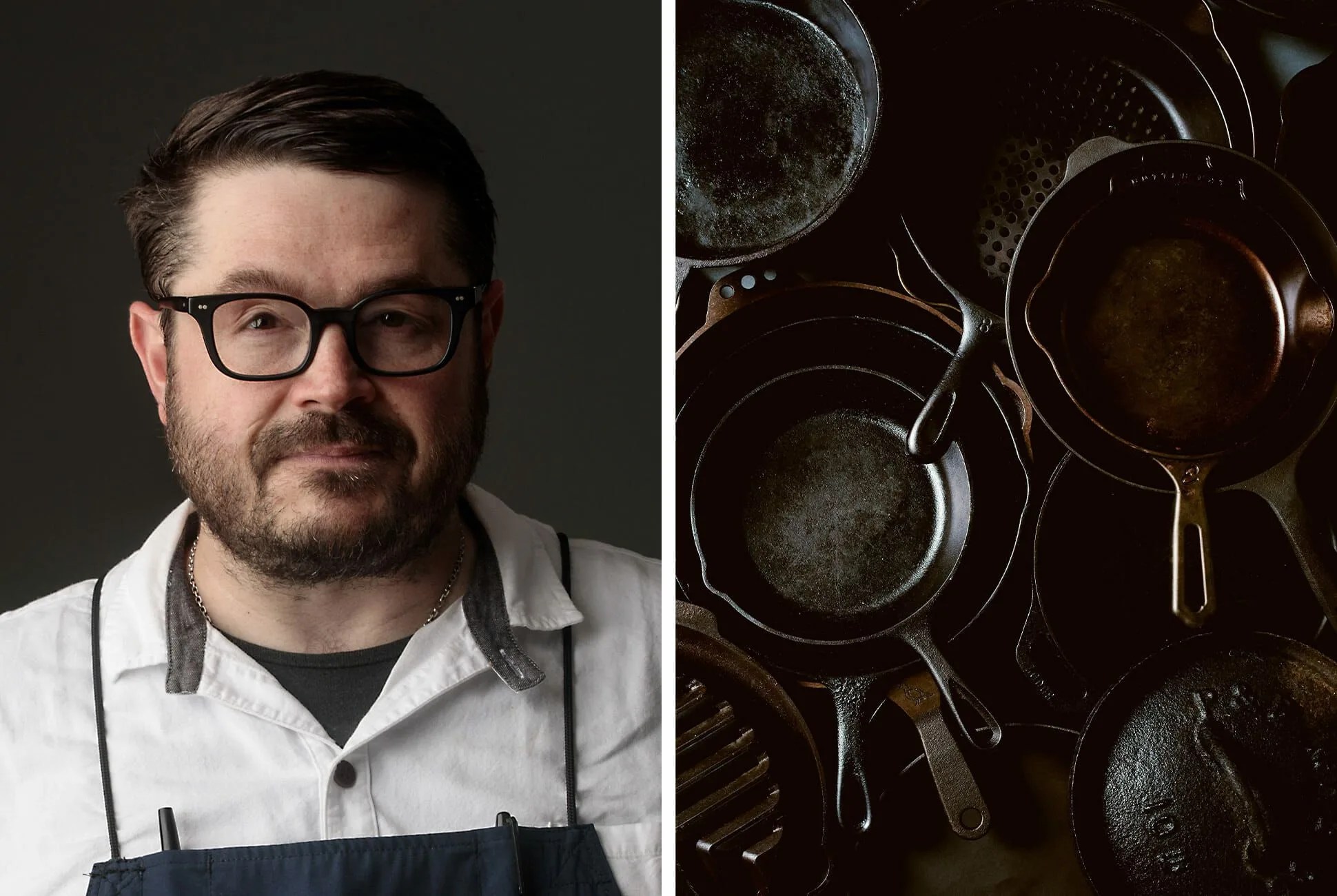When Sean Brock talks about cast-iron skillets, you should listen.
Founding chef of the award-winning Husk restaurants, author of James Beard-winning Southern cookbook Heritage and frequent Netflix cooking show host (Chef’s Table, The Mind of a Chef), Brock may very well be Southern cuisine’s foremost evangelist. And there is no cuisine that makes more use of the cast-iron skillet than food from the South.
Inside his new cookbook, South (available October 15th), you’ll find hundreds of dishes, ranging from fried catfish to Caeser salad collard greens. But wedged between a dozen different chicken preparations is Brock’s recipe for a perfectly seasoned skillet. Here’s everything you need to know.

The following is excerpted from South by Sean Brock (Artisan Books). Copyright © 2019. Photographs by Peter Frank Edwards.
Quick Cleanup
After you’ve cooked your cornbread or morning bacon, let your skillet cool a little bit and then thoroughly wipe the inside and outside with a clean kitchen towel or paper towels. For a lot of applications, this is all the cleaning you need to do
When Things Get Sticky
If you’re left with some tricky, sticky bits of food in your skillet, you can add a little bit of warm water to the pan and scrape up the pieces with a wooden spoon, but never let the water stand in your skillet. Cast iron is prone to rusting when exposed to water for any extended amount of time. Pour out the water and wipe the skillet completely dry. Warm the skillet over low heat for 5 minutes to ensure that any remaining water evaporates, then add enough flaxseed oil to coat the inside of the skillet, carefully spreading the oil with a clean towel. Turn the heat off and leave the skillet to cool. Then wipe any excess oil from the skillet and store it, ready for its next job.
Adding Layers of Seasoning
If you need to reseason your pan (or if you’ve picked up one from a thrift shop and it needs some loving care), place the cleaned and dried skillet (or other cast-iron piece) in the oven and heat it to 200 degrees. When the oven reaches 200 degrees, remove the skillet and crank the oven up to 500°F. Add a tablespoon or so of flaxseed oil to your pan and wipe it over all the surface. Take a clean towel and wipe away all the oil, leaving behind only a very thin film. This is the fat that will undergo polymerization and give your prized possession its protective coating. Place the skillet in the 500 degree oven for 1 hour to complete the reseasoning. Turn the oven off and leave the skillet inside to cool. Repeating this process every so often will keep your cast-iron pieces in working order for generations.
Note: Purchasing products through our links may earn us a portion of the sale, which supports our editorial team’s mission. Learn more here.
